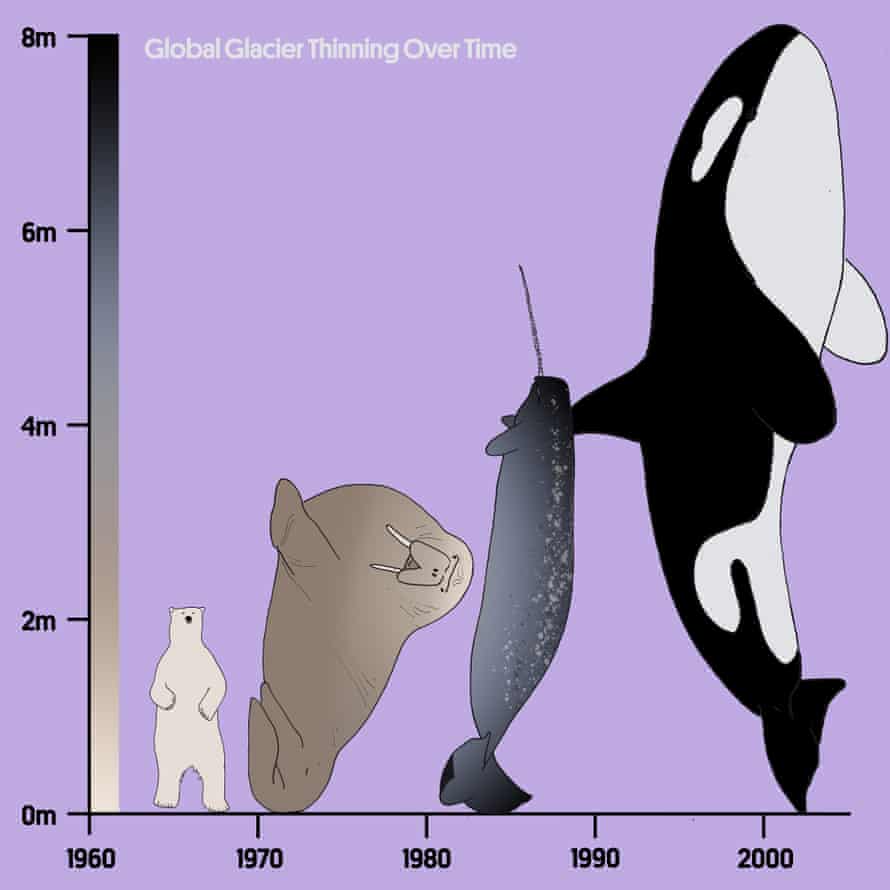Extract from The Guardian
Our disappearing glaciers Environment
Analysis: glaciers are on average 8 metres thinner and many have vanished completely because of global heating.

Last modified on Sat 1 May 2021 17.33 AEST
The rate at which glaciers have been thinning has accelerated in recent years. Since the 1960s, when the effects of global heating started to become clear, the pace of melting has grown faster and faster.
In the 1960s, glaciers were losing just a few centimetres of thickness a year, and in some years even adding mass. However, by the 1990s, it was normal to see 40-60cm a year of average ice loss. The only exception was in the year after the enormous volcanic eruption of Mount Pinatubo in the Philippines in 1991, which had a dramatic cooling effect on the Earth, resulting in a slight gain in mass.
The rate has continued to accelerate since then, and in the early 2000s, the most recent data set available, glaciers were on average 8 metres thinner than they had been 50 years earlier. It is certain that they have only grown thinner since.
The melting over that period alone added 17mm to global sea levels – and the rate of increase is accelerating. Even small rises in sea level can be catastrophic for low-lying regions, and increases the risk of flooding.
Many glaciers have vanished completely, and many more are expected to by the end of the century. Glaciers in the north-west US, south-west Canada and Alaska, Asia and Patagonia have lost disproportionate amounts of ice relative to their surface area.
No comments:
Post a Comment